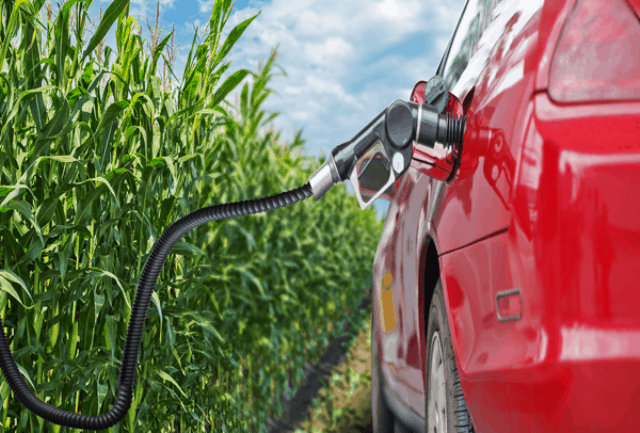
Biofuel Push Will Benefit Farmers, Curb Pollution
How could around 50 million sugarcane growers and another 500,000 workers engaged in cane crushing factories across the country could come to the aid of curbing air pollution in principal Indian cities! Like we are experiencing now, pollution hits alarming proportions every winter when hospitals and nursing homes in Delhi, Kolkata and many other places are overwhelmed by visits of patients with severe breathing difficulties. City doctors have not stopped giving warnings to the government at the Centre and in states that the air pollution status is nothing less than health emergency.
Their concern is confirmed by a new study by New Delhi based Public Health Foundation of India along with collaborating institutions that has found 1.67 million premature deaths attributable to unacceptable air quality constituting approximately 18 per cent of India’s total mortality in 2019. No less alarmingly, the study also points out, the economic loss due to air pollution related diseases and deaths equalled 1.4 per cent of the country’s gross domestic product (GDP) or Rs260,000 crore, which is nearly three times the Union Budget’s provision for health. The air pollution linked deaths are caused by chronic obstructive pulmonary disease, heart failure, respiratory infections and neonatal disorders.
One does not have to be an expert to know that exhaust from cars and heavy goods vehicles and suspended dust on roads due to continuous vehicular movement are among the major cause of city air pollution. The problem is exacerbated by the government holding back on enactment of a scrappage policy that is to create an ecosystem for voluntary and environment friendly phasing out of vehicles operating for over 15 years.
A cabinet note on the subject of great import for curbing environmental pollution and promotion of circular economy as all the steel and aluminium to be recovered by scientifically dismantling of vehicles are to be recycled for further use is ready. But while the BJP-led government had hurriedly enacted the controversial three laws relating to farming, a policy for scrapping of polluting vehicles has for reasons wrapped in mystery is once again held back for consultation.
In this grave situation, what is urgently required is for the government to require of vehicle makers to go on reducing emission of air pollutants from internal combustion engine. It’s not that progress has not been made in the direction as the migration to Bharat Stage VI emission norms by car makers straight from BS IV skipping the one in between from April 2020 and petrol stations selling only sulphur in fuel complying with BS VI standard. Concerns about keeping the earth clean and human beings in good health will perforce lead the government to have increasingly stricter fuel burning norms for vehicles approximating increasingly exacting standards found in European Union, Japan and the US.
ALSO READ: Economic Cost Of Pollution In India
At the same time, India, which is the world’s second largest producer of sugar and growing a lot more sugarcane than is needed to take care of the domestic demand for the sweetener, is uniquely placed to produce large volumes of ethanol either directly from cane juice or as a derivative from different grades of molasses, a sugar by-product. This renewable bio resource should be sustainably available here on a large scale, provided adequate capital investment is made in processing sugarcane, rice or corn. When ethanol is used as a fuel in a blend with gasoline, it has the potential to lower the pollution caused by vehicles. Ethanol-gasoline mixture burns cleaner and the mix has higher octane levels than pure gasoline.
As it would happen, India, which is the world’s second largest producer of rice after China, is likely to have an output of 120 million tonnes during 2020-21 (July to June) leaving a considerable surplus after meeting domestic demand and exports. Over the last many years, the country has faced issues in managing rice inventory that at times would be in excess of 20 million tonnes. Besides the cost involved in managing such a big reserve, India stands out as an example of enormous quantities of rice and other agricultural produce going waste due to issues relating to maintaining reserves.
Incidentally, Transport and MSME minister Nitin Gadkari is holding consultation with the PMO and concerned secretaries for also using rice along with sugarcane juice for producing ethanol. As Gadkari says, the three driving objectives are: (i) Go on raising the percentage of ethanol in mixed fuel as a way to curb air poisoning; (ii) improve the income of farmers by way of channelling the surpluses into productive use; and (iii) spare the government of difficulties in undertaking the rising subsidy burden.
What other farm products, including rice, will be used for making ethanol remains a subject of conjecture. For the time being therefore, the focus will remain on processing sugarcane, either directly from cane or from B heavy and C heavy molasses, to make ethanol. The push for committing a growing portion of sugarcane for making the renewable biofuel is now coming from New Delhi, which has under its umbrella three major oil marketing companies (OMCs), namely, Indian Oil, BPCL and HPCL.
The other day, Railways Minister Piyus Goyal, who also holds the commerce and food portfolios, didn’t mince words when he told the members of Indian Sugar Mills Association (ISMA) that the only way the industry could avoid periodic crisis situation was to go on producing more and more ethanol and also at the same time broaden its product portfolio based on sugar by-products such as molasses and bagasse.
ALSO READ: Govt Doublespeak On Renewable Energy
“Why should your target be to blend 10 per cent ethanol? Ethanol blending in the mixed fuel can go up to 20 per cent and further to 30 per cent. You will find in Brazil the share of ethanol in fuel being up to 80 per cent,” said Goyal. There is commitment from the government that to the extent sugar factories will be making ethanol, they will find buyers in OMCs at remunerative prices. Because of improvement in farm productivity on introduction of a number of high-yielding and early maturing strains of cane, sugar factories are producing sugar in a good crop year a lot more sweetener than is consumed in the country.
For instance, in the current sugar season, the country is heading for production of 31 million tonnes in the current 2020-21 season to which is added 10.7 million tonnes from the past year. While our requirement is around 26 million tonnes, attempts will be made to export 6 million tonnes. That again will leave the country to contend with large unsold stocks. Such high production keeps the market price below production cost badly impacting factory capacity to clear bills of farmers in stipulated two weeks. Sugarcane happens to be the only crop which factories are required by law to buy to the last stick in their respective command areas.
Circumstances force the government from time to time to create a sizeable buffer stock picking up the bill for its maintenance. Surplus is the reason why the industry has to undertake exports for which again New Delhi has to provide subsidy. But countries such as Brazil, Guatemala and Thailand who all manage to make sugar at lower cost than India have complained that this country’s exports with subsidy are in breach of WTO rules.
In any case, subsidised sugar exports will be no go beyond 2023. That’s when ethanol production at growing levels will become absolutely necessary to protect the sugar industry and also to ensure that cane growers are not kept waiting unconscionably long for cane payments.
The country’s use of ethanol in blended fuel is around 5 per cent which the current capacity of approximately 3.5 billion litres can easily meet. But at 10 per cent blending, the capacity required will be around 4.5 billion litres. According to Vivek M Pittie, immediate past president of ISMA, the government has already fixed standards for 20 per cent ethanol blending assured as it is of availability of feedstock. Automobile makers will have to be taken on board for the transition in fuel composition, which call for some changes in engine. What will be urgently needed for the ambitious blending plan to materialise is for the banks to sanction loans for applications pending for creation of new ethanol making capacity.



